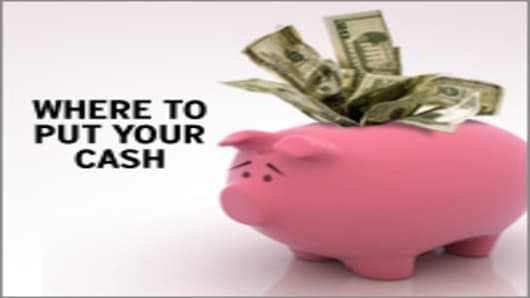Single accounts are covered for up to $100,000. Joint accounts have $100,000 of insurance protection per account holder, and retirement and trust accounts also qualify. So spread your money around. “A married couple can actually shield $1.1 million at one bank just by titling accounts so they are in different ownership categories,” said Greg McBride, a senior financial analyst at Bankrate.com.
MONEY MARKET FUNDS: Another portion should be allocated to money market mutual funds, which carry relatively low yields but are generally safe and liquid, despite the problems some of them had over the past year as investments in complex mortgage-related securities soured.
Unlike conventional bank accounts, money funds have no government guarantees. But money fund managers have always stepped in to rescue their funds because their reputations are on the line, even during this year’s exceptionally volatile markets.
Still, not all money funds are created equal. You should pay attention to the size of the fund, its holdings, its expenses and its track record. Be careful of so-called sweep account money funds offered by brokerage firms, which usually carry high expenses.
High-net-worth investors might want to consider tax-free money funds. Over the past year, their yields have not been appreciably different from their taxable cousins’. Or consider a money market deposit account, which most banks offer. It serves the same purpose as a money fund but carries F.D.I.C. insurance and may pay higher rates. You can use Internet sites like Bankrate.com to search for the highest yields both regionally and nationally.
Even so, this is one type of investment where yield should come second.
“Don’t be greedy,” Mr. Crane said. With money funds, don’t be “in the No. 1 yielding anything. You want to be a B student.”
Bruce R. Bent, who helped invent money market funds in the 1970s and is chief executive of The Reserve, an investment management company, added, “The most important thing is sleeping well at night.”
C.D.’s AND BROKERED DEPOSITS: Investors who do not need their money on hand but are still looking for a safe haven might find certificates of deposit attractive. Banks set their own interest rates, and those badly in need of deposits offer the most attractive rates. C.D.’s are backed by F.D.I.C. insurance. You will have plenty of options. At least six institutions are currently offering one-year C.D.’s at interest rates of 4.25 percent or better.
The catch: If you need your money at a certain time, you must make sure the maturity of your C.D. matches your investment horizon. If you are forced to cash in early, you will pay a penalty rate and forfeit some interest.
Another alternative is buying C.D.’s through your brokerage account. Banks have found this an easy way to raise deposits, and often these C.D.’s will pay higher interest rates than those bought directly from the bank.
Brokered deposits are F.D.I.C. insured, but have a few drawbacks. If you need to cash in early, you could suffer a loss since what you will get in return is only what another investor is willing to pay. And if a bank fails, there is a greater chance you could face a delay in getting to your money. That’s because, unlike ordinary C.D.’s, brokered C.D.’s are held in the firm’s name, not your own, so it can take time to sort out who is owed the money.


